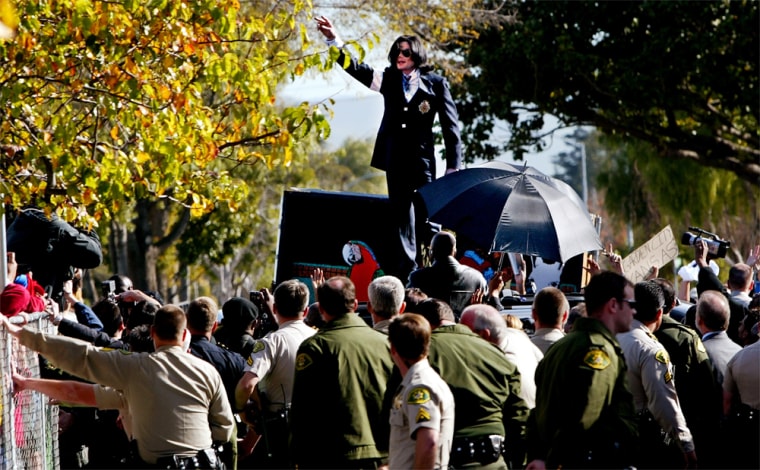Michael Jackson and that crowd: What exactly do his supporters expect when they rallied at the courthouse Friday? And what‘s with crowds, anyway? Howard Dean is hoping for one in Iowa.
If you‘ve ever wondered if that familiar phrase, “three‘s a crowd” is an overestimate, the book for you is Charles McKay‘s 1841 classic, “Extraordinary Popular Dilutions and Madness of Crowds.”
We recognize the influence of crowds on society. Who can hear Dr. Martin Luther King saying, “I have a dream” without seeing the 250,000 people dreaming with him? Though we have no idea about the “how‘s” and “why‘s” of influence of the roar of the crowd, there are currently two examples from two different crowds in two different news stories.
According to Dean’s web site, he has 176,541 supporters‘ worldwide, all members of the Dean Team, 3,580 of them, Dean Team leaders. Some of those, undoubtedly, are amongst the 3,500 expected, in Iowa, to bring out the vote. This 3,500, as a group is only the size of a horrific audience at a minor league baseball game-- yet were as a unit or a crowd, sufficiently unnerving to the Gephardt and Kerry Campaigns to cause them of accuse Dean of trying to pack the Iowa caucuses with out-of-state ringers.
And, in Southern California on Friday, the FBI, security agencies, and the court itself did not know how big a crowd they‘ll be dealing with. They have estimates ranging from 500 to 10,000. The crowd for what? For the Michael Jackson arraignment. Remembering that 500 people out on the street anywhere in Southern California is enough to make you think they‘ve recalled all of the SUV‘s ever made. The prospect of 10,000 Jackson fans bussed to the scene, possibly including organizers from the Nation of Islam, is enough to—well, it‘s enough to get the FBI guessing as to how many people there will actually be there.
What is it about the crowd that disturbs us? Influences us? Sticks with us?
Professor Jerry M. Lewis from the Sociology Department at Kent State University in Ohio, talked about crowds in a Tuesday interview on ‘Countdown with Keith Olbermann,’: “Crowds are, first of all, visually interesting. That‘s why the television loves to cover it,” he said. “Second of all, being part of a crowd is a very exciting experience. As, you‘re bumping into people, you‘re talking to people you‘ve never talked with before, you‘re often do things you‘ve never done before, like chanting or yelling and things like that. Sounds like the dog pound in Cleveland, but anyway, it‘s the reason we like crowds. They‘re, in fact, very exciting events to be part of. They‘re also very exciting to watch.”
The Internet, according to Lewis, has also changed the traditional definition of ‘crowds.’ “The Internet has become now, a metaphor for the crowd, and so people gather on the Internet, they talk to each other on the Internet, they share experiences and so forth,” says Lewis. “And so, we have really a new kind of political dynamic. Instead of the mass rally, we have the mass gathering on the Internet. Now, the question is, does that translate into action? It seems to suggest that it does translate into action of the hard grassroots nature, making phone calls, getting people to caucuses, and so forth.”
This is something that will be tested, literally, on Monday night at the caucuses.
This was Tuesday's No. 2 story on 'Countdown with Keith Olbermann.' Countdown airs weeknights, 8 p.m. ET
